Welcome to our guide on crafting an effective letter template for an anti-discrimination policy! We understand that fostering a diverse and inclusive environment is crucial for any organization. In this article, we'll share practical tips and a sample template to help you communicate your commitment to combating discrimination. So, let's dive in and explore how you can make a positive impact in your workplace!

Clear definition of discrimination
Discrimination refers to the unjust or prejudicial treatment of individuals based on inherent characteristics such as race, gender, age, religion, sexual orientation, disability, or nationality. Such practices can emerge in various settings, including workplaces, educational institutions, and public areas, leading to systemic inequality and exclusion. The impact of discrimination can manifest in both overt and subtle forms, ranging from denial of opportunities to unconscious bias in decision-making processes. Upholding principles of equality and respect is essential to fostering an inclusive environment that values diversity and promotes fairness for all individuals, regardless of their background.
Equal opportunity commitment
The organization upholds a strong commitment to equal opportunity, fostering a workplace free from discrimination. This policy applies universally, encompassing all aspects of employment, including hiring, training, promotions, and benefits, ensuring a diverse and inclusive environment for every individual. Federal legislation, such as the Civil Rights Act (1964), underscores our commitment to prohibiting discrimination based on race, gender, age, disability, and religion. The company actively promotes awareness and education, conducting workshops and training sessions aimed at recognizing unconscious biases, which further strengthens our initiatives. A designated equal opportunity officer oversees compliance and addresses any reported grievances, ensuring that every employee feels valued and respected within our workforce.
Reporting and complaint procedure
The anti-discrimination policy outlines the essential reporting and complaint procedure to ensure a safe and equitable environment. Employees, students, or individuals who experience or witness discriminatory behavior based on race, gender, age, disability, or other protected characteristics are encouraged to report incidents immediately. The designated reporting officer must be contacted via email or phone, providing details such as the date, location, and individuals involved. All complaints will be treated confidentially, and individuals filing complaints will be protected from retaliation. An investigation will typically be initiated within 48 hours of the report; however, timelines may vary based on case complexity. Upon conclusion, individuals will receive a summary of findings and actions taken, ensuring transparency and accountability within the institution.
Consequences of policy violation
Infringement of anti-discrimination policies can lead to significant consequences within an organization. Violations may result in disciplinary action, including formal warnings, suspension, or termination, depending on the severity of the violation. Specific incidents, such as harassment based on race, gender, or disability, are classified as serious offenses. Legal repercussions can also apply, potentially resulting in lawsuits or regulatory fines from authorities, such as the Equal Employment Opportunity Commission (EEOC). Furthermore, reputational damage may ensue, impacting employee morale and trust, as well as the organization's public image and relations with clients or partners in a competitive market. Timely reporting and thorough investigations are essential to uphold the integrity of anti-discrimination policies.
Training and education initiatives
Training and education initiatives play a crucial role in fostering awareness and understanding of anti-discrimination policies within organizations. These programs aim to equip employees, management, and stakeholders with essential knowledge regarding various forms of discrimination, including gender, race, age, and disability biases. Workshops often include statistics illustrating the prevalence of workplace discrimination (e.g., 30% of employees experienced discrimination in a recent survey by the Equal Employment Opportunity Commission) and interactive activities designed to promote empathy and inclusivity among employees. Organizations, such as the Society for Human Resource Management (SHRM), provide resources for creating effective training modules tailored to specific workplace environments, ensuring compliance with legal frameworks like Title VII of the Civil Rights Act of 1964. Continuous education fosters a culture of respect and accountability, essential for enhancing workplace morale and productivity.

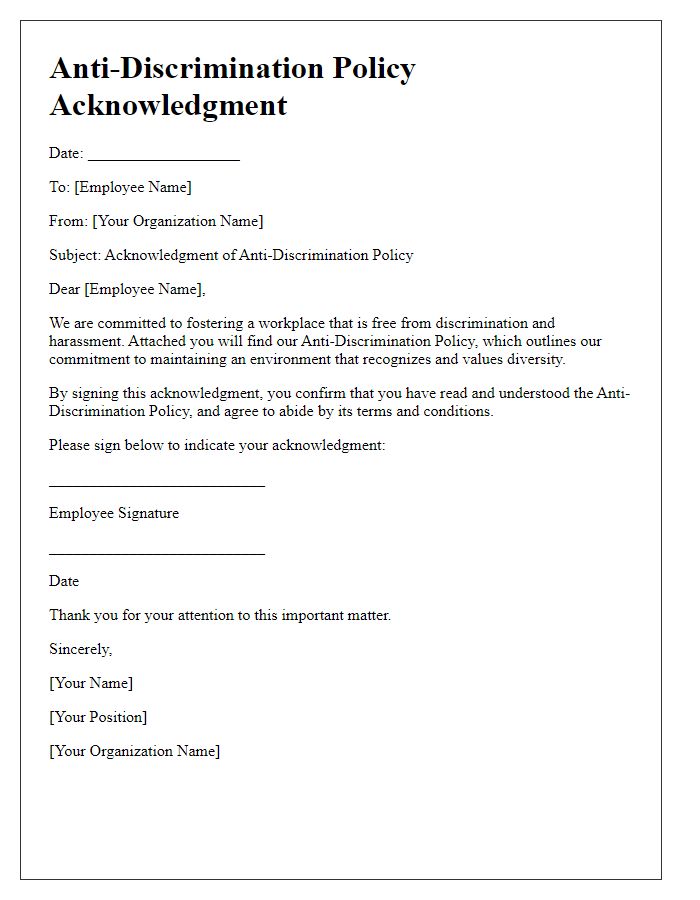
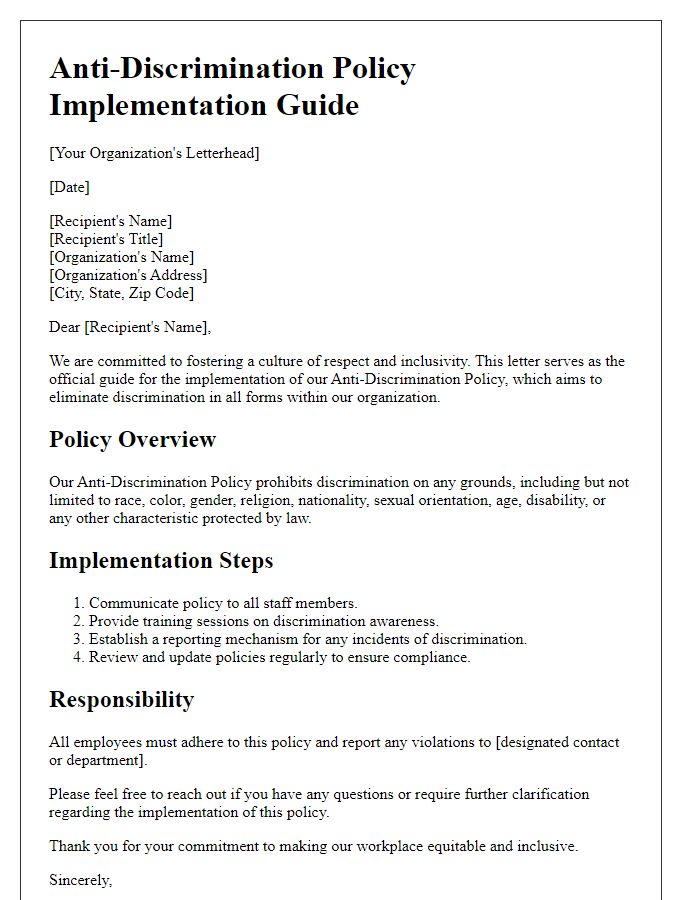
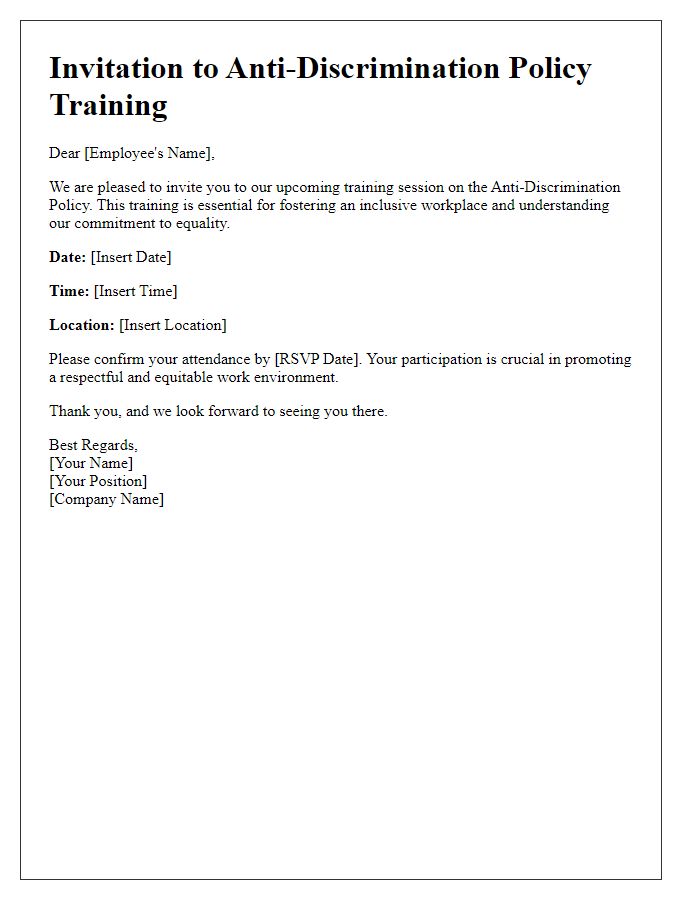
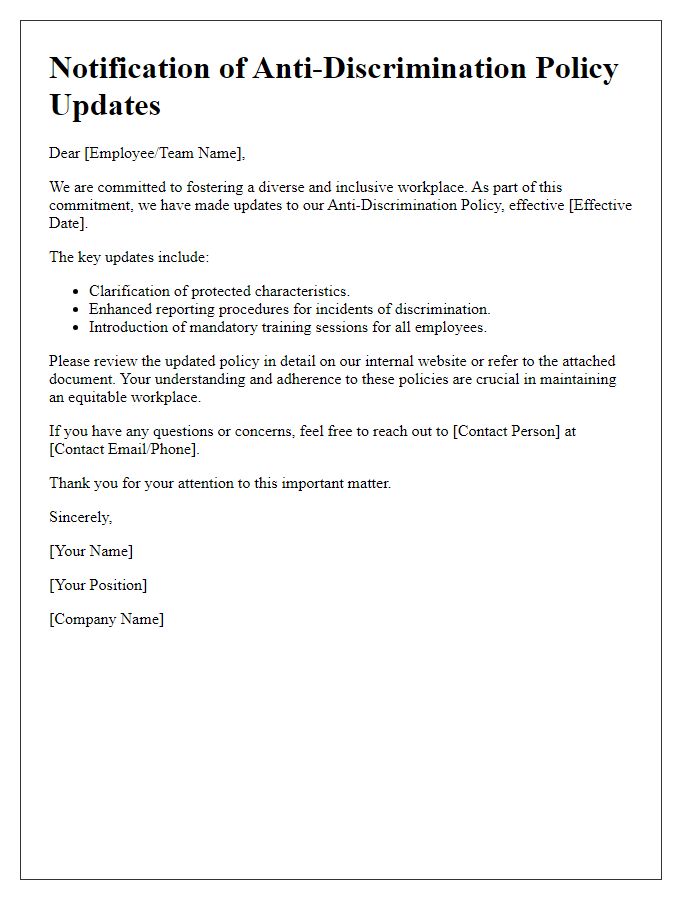
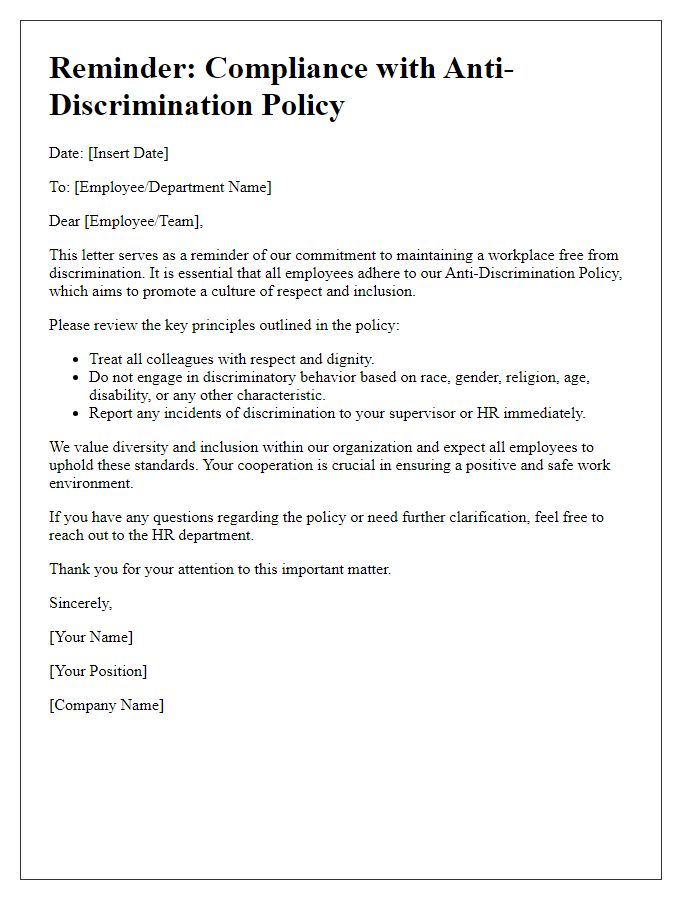
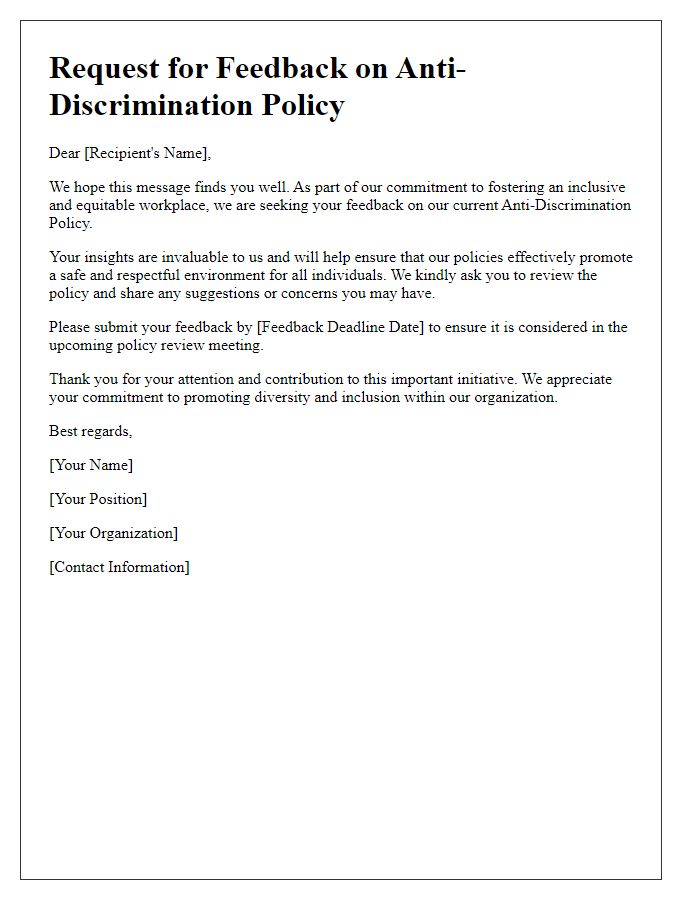
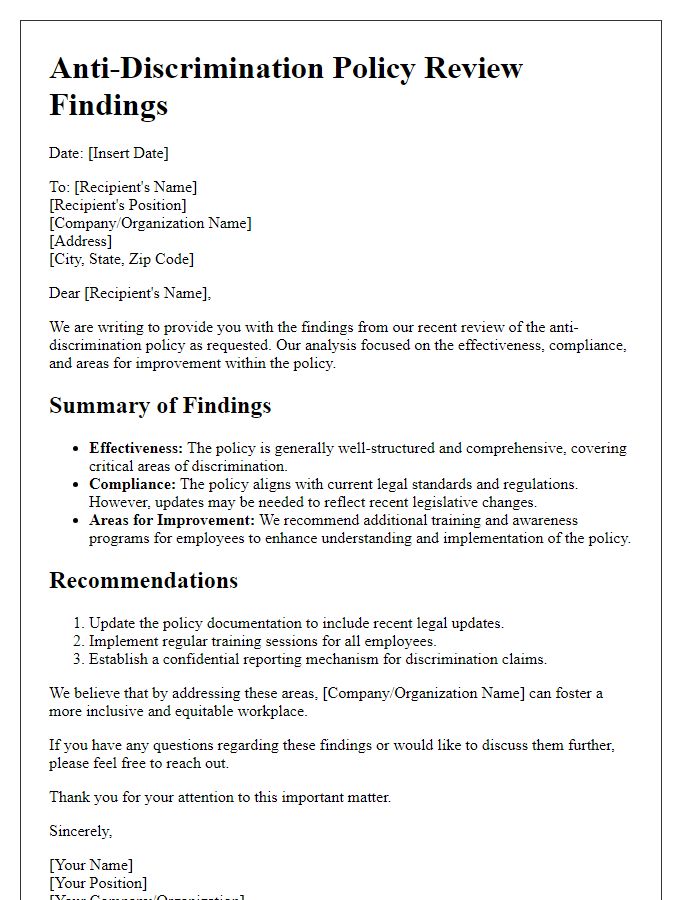
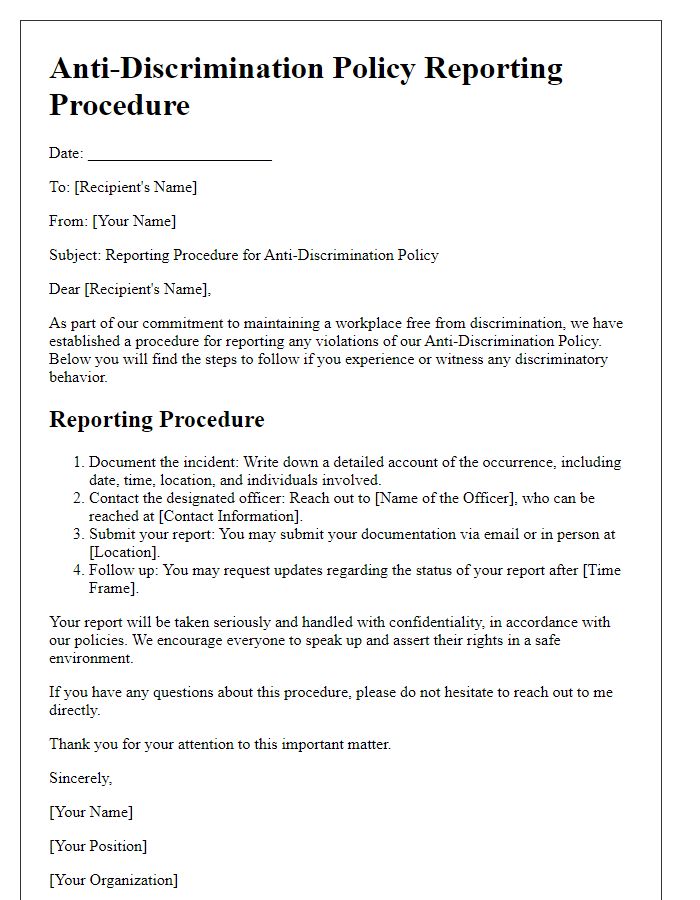
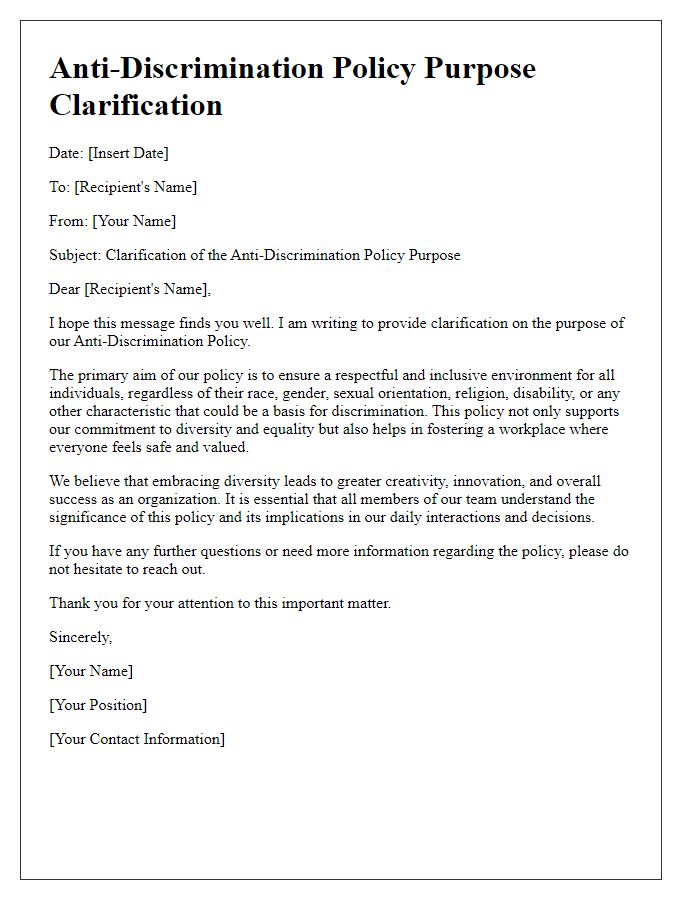
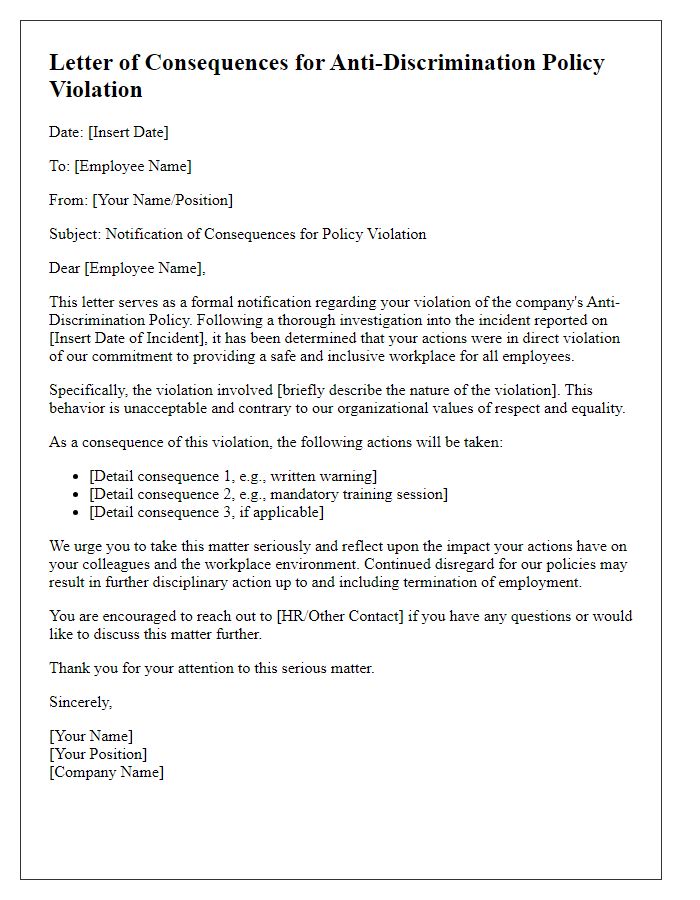





Comments